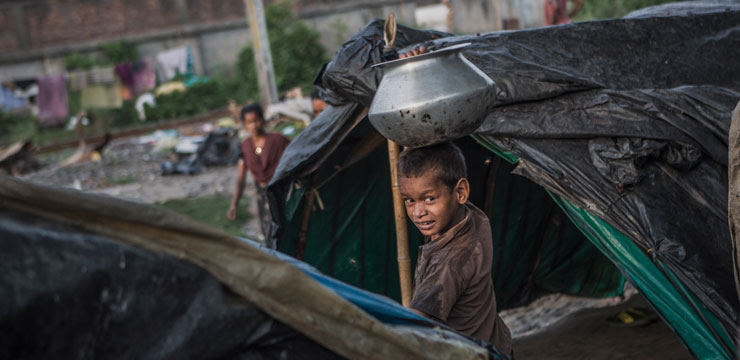(2016-7) Questioning representations
By Paige Cooper, Tomoe Nakano, Elizabeth Vazquez, Imogen Winter
Anthropology teaches us that everything is influenced by, and relative to, culture. Even within aid work, the notions of charity and altruism are predominantly Christian ideas (Redfield, 2013). Global charities such as Save The Children are rooted in this ideology of helping those in need, such as the notion of the ‘good Samaritan’ (Boltanski, 1999).
The representation of aid recipients in particular ways in humanitarian and development work is a major factor in influencing people to become involved in aid work. Material used by the media and aid organisations is often child-centric. This is because children are typically seen as innocent and neutral in conflict and poverty (Malkki, 2015). Therefore, the use of children usually invokes compassion in the viewer. However, it is important to recognise that this view is itself culturally-specific, as children in the West are placed on an ‘ethereal pedestal’ (Wall, 2004). For example, this image from the Save the Children website depicts an anguished-looking child living in impoverished conditions. The child is the centre of the photograph, and lacks little other context except his immediate surroundings.

www.savethechildren.org, 2017
Aid workers are often part of a narrative of ‘neutrality’ or ‘impartiality’ (Redfield, 2011, 2013). However, we argue that, as everyone is influenced by their specific cultural environments, it is impossible to remain completely neutral in their views of development and humanitarian work. Although aid workers may try to inhabit a world of ‘culture without culture’ (Traweek, 1988), anthropology highlights the fundamental difficulty of this. This can help us understand and navigate the disjuncture between different cultures in the field. For instance, the view of the child as pure and innocent and therefore the epitome of requiring aid may not be shared globally.
Stereotypically, the images of children that are used also often remove their individuality and reduce them to their suffering and ‘victimhood’. Although problematic, this form of representation is common and effective in eliciting compassion from the viewer. Anthropology can help to develop ways in which the personhood and dignity of those receiving aid is maintained, as anthropology can be actively involved in the lives of those receiving aid through long-term ethnographic fieldwork. Therefore, it is uniquely placed to understand the specific needs of aid recipients without reducing them to stereotypes. Equally, anthropology can also help to understand how aid workers may perceive their work in the field. For example, the notion of ‘moral distress’ (Fechter, 2016) is useful for understanding how aid workers may be conflicted between their own moral values (which are culturally influenced) and the practical expectations of their work.
Anthropology can help us understand how our actions and views are always culturally influenced, and therefore can help us understand how humanitarian and development work is perceived from multiple viewpoints and contexts. This allows a better understanding of why people pursue development and aid work, and can contribute to effective recruitment techniques.
Bibliography
Boltanski, L. (1999) Distant Suffering: Morality, Media and Politics. Cambridge: Cambridge University Press. pp.3-19
Fechter, A-M (2016) ‘Aid work as moral labour’, Critique of Anthropology, 36(3), pp. 228–243.
Malkki, L. (2015) The Need to Help: the Domestic Arts of International Humanitarianism. Durham, NC: Duke University Press. [Ch.5 (pp. 133-164)]
Redfield, P. (2013) Life in Crisis: The Ethical Journey of Doctors Without Borders. Berkeley: University of California Press.
Redfield, P. and Bornstein, E. 2011. ‘The Impossible Problem of Neutrality’. In Forces of Compassion. Santa Fe: School for Advanced Research. Pp. 53-70.
SaveTheChildren.org.uk. 2017. Seven-year-old Ahmad carries water through the slum where he lives in Kolkata, India. [Online] Available at: http://www.savethechildren.org.uk/about-us/what-we-do/child-poverty [Accessed on: 28 March 2017]
Traweek, S. 1988. Beamtimes and Lifetimes: The World of High Energy Physicists. Cambridge: Harvard University Press.
Wall, J. 2004. “Fallen Angels: A Contemporary Christian Ethical Ontology of Childhood”. International Journal of Practical Theology, 8, pp. 160-184.
